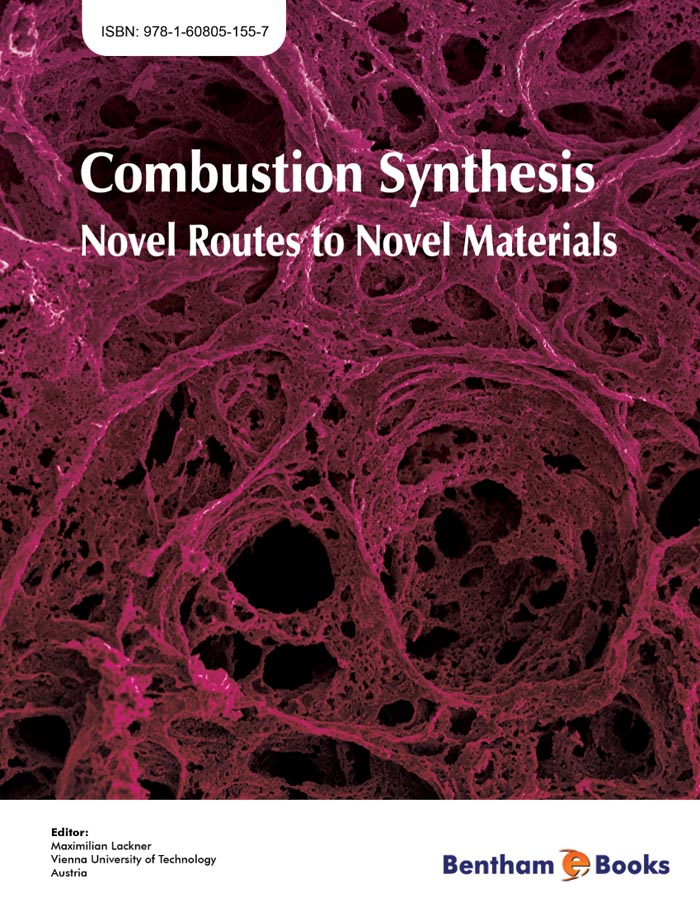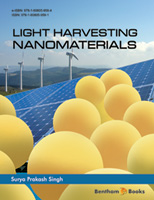This book describes new results in combustion synthesis of inorganic substances and materials.
In such processes power-consuming systems (chemically active mixtures of simple substances or separate substances of a complicated composition) are used. Their reaction occurring in the combustion mode is followed by huge heat evolution and results in formation of a valuable product (chemical compounds as powders or compact materials). It is well known that all high-temperature processes should be realized in the combustion mode because after the reaction local initiation they can occur spontaneously without using an external heat source.
It is always favorable if the synthesized product’s characteristics meet the initial requirements. But in organization of such synthesis there can be some difficulties connected with choosing a proper heat-evolving reaction or with a high price of raw materials.
The economic efficiency of a combustion process application for solving a definite synthetic task can be realized before the work organization due to simple calculations but it is difficult to evaluate the quality of combustion products a priori. There are no scientific methods of preliminary evaluation of combustion product quality; a lot of things depend on the specialist in synthesis, his knowledge, skills and experience.
There are two ways of synthesis organization by means of combustion processes. Let’s call them chemical-analytical and macrokinetic ones.
The chemical-analytical method has been known for ages. It is rather simple from the viewpoint of its background. The combustion process is not considered as a heat process. It is “a black box” with some reagents at its input and a valuable product at the outlet. But the specialist does not know about the processes inside “the box”. He obtains a dependence of the final characteristics of the product on the initial mixture composition which gives him an opportunity to determine the terms of the process organization. It is a very convenient method of an express-synthesis. If the result of such synthesis is positive and it is necessary to develop a technology, they meet great difficulties connected with the production scale. The combustion process in technological installations can occur in a different way in comparison with the experiment. In order to find optimum conditions for obtaining the required product, similar experiments should be carried out in bigger installations with considerable consumption of the reagents. It slurs over the technological importance of this approach. However, the work using the “black box” method can be of great interest due to the possibility of synthesizing new products and studying their properties.
Another approach was developed in the Scientific Center of the USSR Academy of Sciences at the end of the 60-s. One of the main directions developed in the Center, which is situated in the town of Chernogolovka not far from Moscow, was investigation of combustion of heat-evolving power-consuming systems.
In 1967 the scientists of the Center discovered some unusual combustion processes in which all the substances (reagents and products) were solid. Such solid-flame combustion had not been known by the time and its existence was considered as a scientific discovery.
The products of the combustion were well-known refractory compounds (borides, carbides, silicides, nitrides, etc.) used in industry. It was clear that the solid-flame combustion could become the method for obtaining such compounds. As a result the method of self-propagating high-temperature synthesis (SHS) was developed. It connected combustion processes with synthesis of inorganic substances and materials.
This method had its own peculiarities which set it apart from other synthetic approaches.
The main difference implied is that very many factors influence the final product formation. It means that it is necessary to find optimum combinations of parameters for obtaining high-quality products. The combustion and synthesis processes appeared to be closely connected with each other and it was impossible to study them separately. In order to understand them, the specialists in combustion (they were physicists) began studying chemistry and materials science simultaneously with the traditional organization of their investigation.
The result of that work is well-known now. SHS processes and products are studied and used in many countries (more than 50); the World Society of SHS specialists has been created; a new field of science – structural macrokinetics connecting combustion science with macrokinetics has been developed. Principles of the alternative technology are being actively developed. There are some good achievements in organization of industrial production. In some countries there are special schools educating SHS specialists. Having overcome doubts of some specialists and criticism of ill-wishers, SHS advances along a wide road as one of the leaders of the scientific-and-technical progress.
In the field of SHS there are different directions. The main one is connected with synthesis. But the notion of the word “synthesis” has become much wider. Starting with preliminary synthesis of refractory compounds, the scientists moved to obtaining other materials by the SHS method (thermally unstable hydrides and chalcogenides, complex oxides, etc). Now we have the well-developed conception of the combustion mechanism of various systems and it is not necessary to carry out thorough investigation of combustion regularities of a definite system. The specialists can find the shortest ways to obtain the final product of a very high quality. SHS can be also used for direct synthesis of materials when specialists produce definite requirements both to material structure and item size, shape and operation characteristics. Probably, SHS will be used for direct synthesis of complicated constructions.
SHS is rather promising for production of nano-materials. Earlier some specialists thought that SHS could not be applied for material production because of its high temperature. But now when the structure formation mechanism in SHS processes is clear enough, we can imagine that in future nano-industry will be based on SHS.
Nowadays SHS is aimed at low-exothermic reactions. SHS specialists do not like it when somebody says that the SHS method can’t be used in the case of low-exothermic reactions: there are some good results in donor-acceptor interactions between various SHS processes. In this problem both methods are valuable and each of them has found its niche in the investigation. It is obvious that if you wish to get a prior approximate result, you will start the work using the “black box” method. But if you desire to obtain more thorough information and you have enough time, it is better to use SHS.
Also it is possible to imagine the interaction of both approaches. The “black box” method will be the first stage of the integrated process of investigation.
How should our field of knowledge be called properly? It is necessary to clarify this question. But in our field there is a double terminology. Many years ago such processes were called ignition reactions but then this definition disappeared because the problems were not thoroughly studied in those days.
At first the authors of the discovery wanted to name this process as a combustion synthesis. But it was clear that the combustion process occurred in two stages: flame propagation and structure formation in final products. The latter appeared to be the main stage in many processes since it defines the final product properties.
Then the authors called the process self-propagating high-temperature synthesis (SHS) as it properly reflected the main scientific idea of the process.
In the 70-s it was the only definition. At the beginning of the 80-s J. Crider, a staff member of the Information Center of the USA Army, published an article “Self-propagating high-temperature synthesis – a Soviet method of ceramic material production”. It started an active development of SHS in the world. In the papers of American scientists, who were the first to join us in our investigation, the process was called “combustion synthesis”. Two definitions were in use, that is why we can speak about the double terminology.
Then we realized how to divide these notions. There is an opinion that the processes which consider the combustion wave propagation mechanism and regularities should be called SHS but the processes mainly dealing with investigation of combustion products without studying the combustion process itself should be called combustion synthesis. But this question is still being discussed.
The name of the book reflects the division of these two notions.
And now let’s consider the book from the viewpoint of the above-mentioned ideas:
-
All the articles are dedicated to the investigation of the composition, structure and properties of the products obtained during the combustion of power-consuming systems.
-
The articles have been written by active specialists in chemistry and materials science. They reflect the authors’ interests and develop the chemical-analytical and materials science approach to the problem. The fulfilled investigations were organized thoroughly using up-to-date devices and installations.
-
The combustion process has not been described almost in all the papers. Obviously, it has not been studied. So the methods of investigation can be referred to the first group of the approaches where combustion acts as the “black box”.
-
The book demonstrates the authors’ aspiration to work in the vanguard of the problem making accents on the new methods of green mixture or reagent system preparation (sol-gel method, solution combustion, mixtures to block particles forming in combustion processes, use of salt fillers for green mixtures, etc.).
-
Great attention is paid to the problem of formation of nano-sized particles and production of nano-powders and compact composite materials with nano-sized components.
-
In most papers the main product is an oxide. The prevailing interest to oxides has become a tradition in materials science. It is obviously connected with two factors:
-
Unfortunately, two available directions in combustion application for material production – combustion synthesis and self-propagating high-temperature synthesis (CS and SHS) are being developed separately and independently. There is no purposeful exchange of information or private communication between specialists. It does not promote fruitful development of this very important field of knowledge.
And in conclusion it is necessary to underline that this remarkable book was created by Maximilian Lackner. On behalf of the readers I’d like to send him my congratulations on this success and express my hope that due to his creative work item 7 won’t appear in such books anymore.
Alexander G. Merzhanov, January 2010




